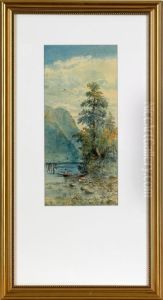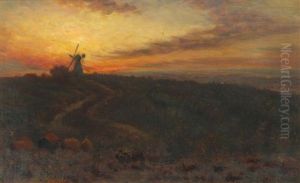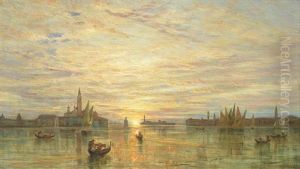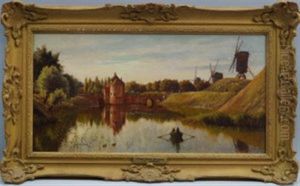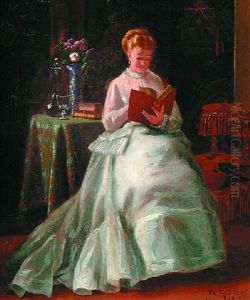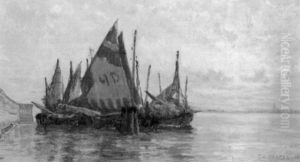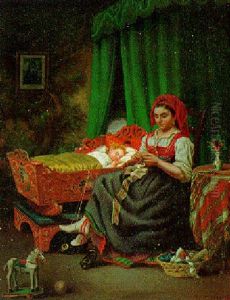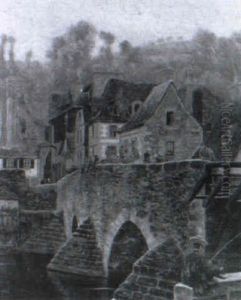Thomas Charles Farrer Paintings
Thomas Charles Farrer was an English-born painter who played a significant role in the American Pre-Raphaelite movement. Born on March 23, 1838, in London, England, Farrer was an early advocate of the principles laid out by the Pre-Raphaelite Brotherhood, a group of English painters, poets, and art critics founded in 1848 that intended to reform art by rejecting what they considered to be the mechanistic approach first adopted by the Mannerist artists who succeeded Raphael and Michelangelo.
Farrer received his training at the Government School of Design, South Kensington, and later at the Royal Academy of Arts. He was influenced by John Ruskin and the works of the Pre-Raphaelite Brotherhood, which included notable artists such as Dante Gabriel Rossetti, William Holman Hunt, and John Everett Millais. These artists focused on detailed observation of the natural world, intense colors, and complex compositions, which were in stark contrast to the prevailing trends of Victorian academic art.
In 1861, Farrer immigrated to the United States, where he became a central figure in the American Pre-Raphaelite movement. Settling in New York City, he exhibited his works at the National Academy of Design and was one of the founding members of the Association for the Advancement of Truth in Art, an American group that espoused Ruskinian principles. Farrer's work in the United States included teaching and influencing a number of American artists to embrace Pre-Raphaelite ideals.
Farrer's own paintings often depicted detailed and realistic landscapes, botanical studies, and still lifes, demonstrating the meticulous attention to nature's subtleties, which was a hallmark of Pre-Raphaelite art. His work is characterized by its luminous color palette and the incorporation of elements from his natural surroundings, capturing the beauty of the American landscape with a fresh perspective that was informed by but distinct from his English roots.
Thomas Charles Farrer continued to paint and contribute to the arts until his death on November 12, 1891. While he may not be as widely known as some of his contemporaries, his work had a lasting impact on American art and the legacy of the Pre-Raphaelite movement in the United States. His paintings are held in various collections, including the Metropolitan Museum of Art in New York, which serves as a testament to his skill and vision as an artist.
